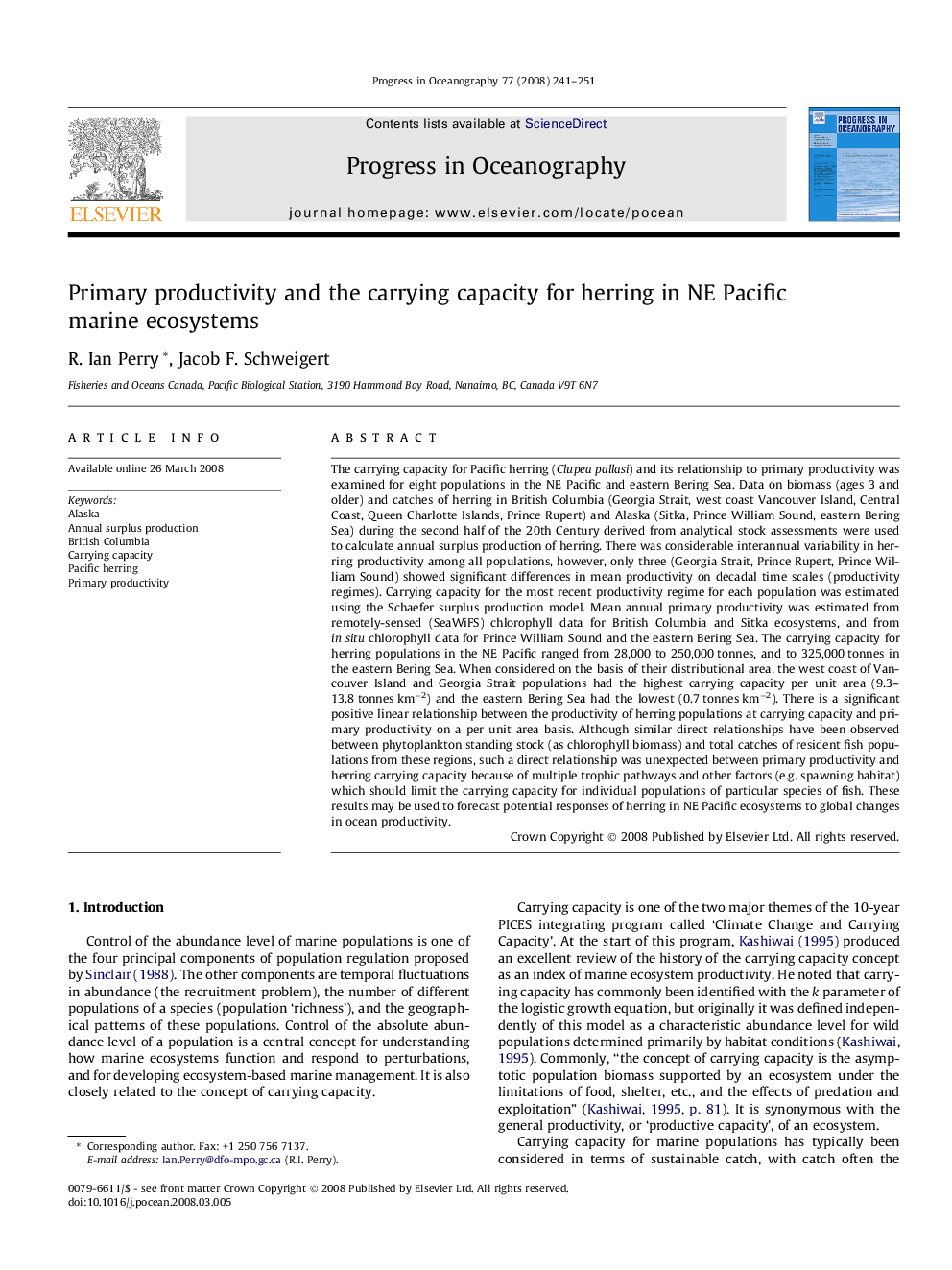| کد مقاله | کد نشریه | سال انتشار | مقاله انگلیسی | نسخه تمام متن |
|---|---|---|---|---|
| 4553757 | 1627970 | 2008 | 11 صفحه PDF | دانلود رایگان |

The carrying capacity for Pacific herring (Clupea pallasi) and its relationship to primary productivity was examined for eight populations in the NE Pacific and eastern Bering Sea. Data on biomass (ages 3 and older) and catches of herring in British Columbia (Georgia Strait, west coast Vancouver Island, Central Coast, Queen Charlotte Islands, Prince Rupert) and Alaska (Sitka, Prince William Sound, eastern Bering Sea) during the second half of the 20th Century derived from analytical stock assessments were used to calculate annual surplus production of herring. There was considerable interannual variability in herring productivity among all populations, however, only three (Georgia Strait, Prince Rupert, Prince William Sound) showed significant differences in mean productivity on decadal time scales (productivity regimes). Carrying capacity for the most recent productivity regime for each population was estimated using the Schaefer surplus production model. Mean annual primary productivity was estimated from remotely-sensed (SeaWiFS) chlorophyll data for British Columbia and Sitka ecosystems, and from in situ chlorophyll data for Prince William Sound and the eastern Bering Sea. The carrying capacity for herring populations in the NE Pacific ranged from 28,000 to 250,000 tonnes, and to 325,000 tonnes in the eastern Bering Sea. When considered on the basis of their distributional area, the west coast of Vancouver Island and Georgia Strait populations had the highest carrying capacity per unit area (9.3–13.8 tonnes km−2) and the eastern Bering Sea had the lowest (0.7 tonnes km−2). There is a significant positive linear relationship between the productivity of herring populations at carrying capacity and primary productivity on a per unit area basis. Although similar direct relationships have been observed between phytoplankton standing stock (as chlorophyll biomass) and total catches of resident fish populations from these regions, such a direct relationship was unexpected between primary productivity and herring carrying capacity because of multiple trophic pathways and other factors (e.g. spawning habitat) which should limit the carrying capacity for individual populations of particular species of fish. These results may be used to forecast potential responses of herring in NE Pacific ecosystems to global changes in ocean productivity.
Journal: Progress in Oceanography - Volume 77, Issues 2–3, May–June 2008, Pages 241–251